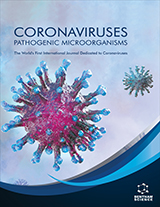Abstract
Eicosanoids have been the major therapeutic targets in rheumatoid arthritis and other degenerative diseases where inflammation is involved. In the past decade, the biological significance of eicosanoids and their potential as therapeutic targets in cancer have also been recognized and is now a focal area of research in many laboratories. Recently, phospholipase A2 (PLA2), the enzyme responsible for arachidonic acid supply to eicosanoid-producing enzymes has attracted attention. It has been proposed that PLA2 inhibition can yield a better therapeutic outcome than inhibition of individual eicosanoid-producing enzymes. In this article, we focus on the rationale for targeting arachidonic acideicosanoid pathways as well as evaluate the recent patents that identify inhibitors of the PLA2 family of enzymes.
Keywords: Eicosanoids, cyclooxygenase, lipoxygenase, secreted phospholipase A2, cytosolic phospholipase A2, annexin A1, annexin A2
Recent Patents on Endocrine, Metabolic & Immune Drug Discovery (Discontinued)
Title: Aberrant Activation of Arachidonic Acid and Eicosanoid Pathways-Targets for Treating Prostate Cancer
Volume: 2 Issue: 1
Author(s): Qihan Dong, Marzieh Niknami, Manish Patel and Paul Witting
Affiliation:
Keywords: Eicosanoids, cyclooxygenase, lipoxygenase, secreted phospholipase A2, cytosolic phospholipase A2, annexin A1, annexin A2
Abstract: Eicosanoids have been the major therapeutic targets in rheumatoid arthritis and other degenerative diseases where inflammation is involved. In the past decade, the biological significance of eicosanoids and their potential as therapeutic targets in cancer have also been recognized and is now a focal area of research in many laboratories. Recently, phospholipase A2 (PLA2), the enzyme responsible for arachidonic acid supply to eicosanoid-producing enzymes has attracted attention. It has been proposed that PLA2 inhibition can yield a better therapeutic outcome than inhibition of individual eicosanoid-producing enzymes. In this article, we focus on the rationale for targeting arachidonic acideicosanoid pathways as well as evaluate the recent patents that identify inhibitors of the PLA2 family of enzymes.
Export Options
About this article
Cite this article as:
Dong Qihan, Niknami Marzieh, Patel Manish and Witting Paul, Aberrant Activation of Arachidonic Acid and Eicosanoid Pathways-Targets for Treating Prostate Cancer, Recent Patents on Endocrine, Metabolic & Immune Drug Discovery (Discontinued) 2008; 2 (1) . https://dx.doi.org/10.2174/187221408783421291
| DOI https://dx.doi.org/10.2174/187221408783421291 |
Print ISSN 1872-2148 |
| Publisher Name Bentham Science Publisher |
Online ISSN 2212-3334 |
 13
13Related Articles
-
Microarrays and the Genetic Analysis of Brain Tumors
Current Genomics Apoptotic Potency of Angiostatic Compounds in the Treatment of Cancer
Current Pharmaceutical Biotechnology Polyketide Natural Products, Acetogenins from Graviola (Annona muricata L), its Biochemical, Cytotoxic Activity and Various Analyses Through Computational and Bio-Programming Methods
Current Pharmaceutical Design Metabolic Action of Thyroid Hormones: Insights from Functional and Proteomic Studies
Current Proteomics The ABCA2 Transporter: Intracellular Roles in Trafficking and Metabolism of LDL-Derived Cholesterol and Sterol-Related Compounds
Current Drug Metabolism New Cell Therapy Using Bone Marrow-Derived Stem Cells/Endothelial Progenitor Cells to Accelerate Neovascularization in Healing of Experimental Ulcerative Colitis
Current Pharmaceutical Design Integrated, Molecular Engineering Approaches to Develop Prostate Cancer Gene Therapy
Current Gene Therapy Editorial Nutritional Therapy in Metabolic Syndrome
Current Vascular Pharmacology A Novel Nanoformulation of Ellagic Acid is Promising in Restoring Oxidative Homeostasis in Rat Brains with Alzheimer’s Disease
Current Drug Metabolism Direct Targeting of the Ras GTPase Superfamily Through Structure- Based Design
Current Topics in Medicinal Chemistry MicroRNAs: Potential Diagnostic and Therapeutic Targets for Breast Cancer
Epigenetic Diagnosis & Therapy (Discontinued) Metallic Nanopopcorns: A New Multimodal Approach for Theranostics
Current Nanoscience The PI3 Kinase Signaling Pathway in Prostate Cancer
Current Cancer Drug Targets Luteolin, a Flavonoid with Potential for Cancer Prevention and Therapy
Current Cancer Drug Targets Chemical and Biological Aspects of the Natural 1,4-Benzoquinone Embelin and its (semi-)Synthetic Derivatives
Current Medicinal Chemistry Potential Cell Signalling Mechanisms Involved in Differential Placental Angiogenesis in Mild and Severe Pre-Eclampsia
Current Vascular Pharmacology Targeting Tumor Microenvironment with Silibinin: Promise and Potential for a Translational Cancer Chemopreventive Strategy
Current Cancer Drug Targets Efficacy and Safety of Targeting Androgen Receptor in Advanced Breast Cancer: A Systematic Review
Current Cancer Therapy Reviews Editorial (Thematic Issue: Targeting Epithelial-to-Mesenchymal Transition for Cancer Therapy)
Current Pharmaceutical Design Bridging the Gap: The Potential Role of Corticosteroid Binding Globulin in Cardiac Steroid Facilitation
Current Drug Targets






















